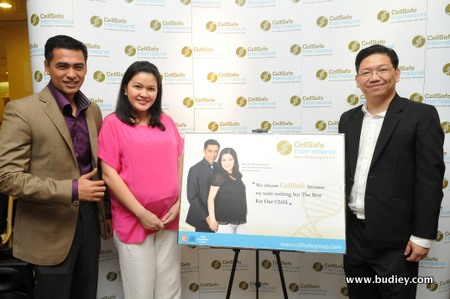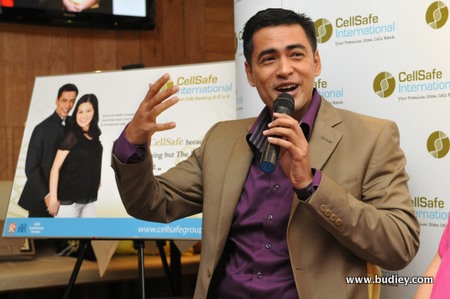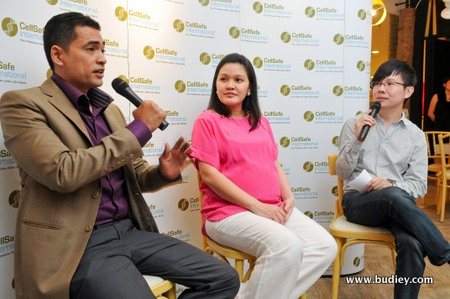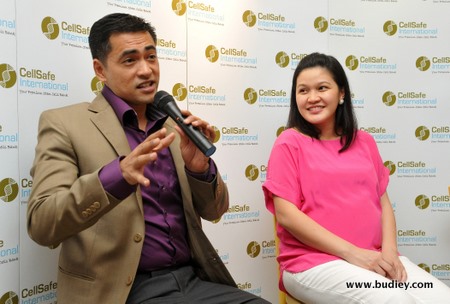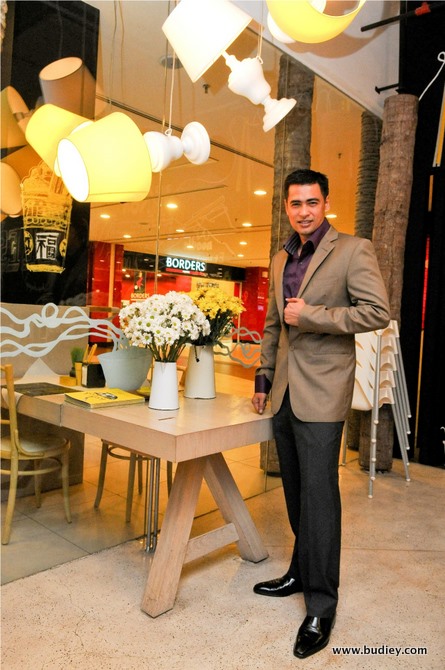MALAYSIA’S FIRST ASTRONAUT & WIFE LEND SUPPORT TO STEM CELL BANKING AWARENESS
Kuala Lumpur, 22 June 2011 – The casual but chic setting of an upmarket noodle bar in Bangsar was the ideal spot for the media gathering by Cellsafe International Group (“Cellsafe”) to launch its latest parenting and stem cell banking awareness campaign. Emceed by Xavier Mah, the informative media conference was attended by more than 50 members of the media and Malaysia’s very first astronaut – Datuk Dr. Sheikh Muszaphar (“Datuk Dr Sheikh”).
The orthopaedic surgeon-turned-astronaut attended the event with his wife Datin Dr. Halina Mohd Yunos (“Dr Halina”), who met our national hero spaceman at medical school. Today’s event sees the couple jointly promoting stem cell banking, a scientific cause they both firmly believe in.
Stem cell banking refers to the scientific practice of preserving a newborn baby’s umbilical cord blood in an extremely low temperature environment referred to as cryogenic preservation. A new born baby’s cord blood is rich with stem cells that can be utilised in the treatment of various diseases. Parents in the United States, the United Kingdom and Taiwan often capitalise on such facilities so that when required the stem cells are readily available for retrieval.
Stem cell banking or cryogenic preservation of stem cells is hence offered by specialist laboratories worldwide. Cellsafe is one such service provider in the region that has made its presence felt in Malaysia since 2007.
Mr. Lau Kin Wai, founder and executive director of Cellsafe gave the welcome speech at the event. “Many parents in Asia have now made informed decision to store their babies’ cord blood stem cells as a precautionary measure for the future. I see this practice as a bio-insurance that could one-day be as important as subscribing to a medical insurance” he explained. “We are a regional high-tech biotech venture that is able to provide non-controversial cord blood stem cell cryogenic preservation. Our lab in Malaysia offers high quality but yet affordable service to the Malaysian population. However, we find the awareness of stem cell banking is often very low outside of the major urban cities of Malaysia.”
This was followed by a testimonial by Datuk Dr Sheikh who also elaborated on his journey to parenthood: “When my wife was expecting, we prepared ourselves by reading parenting websites on the Internet. Incidentally, we came across the topic of stem cell banking that was immensely popular in the United States. Enquiring, we found out that many Malaysians are unaware of such services. We did our due diligence on a highly recommended company named Cellsafe and signed up immediately, throughout impressed by what they were offering. When approached by Cellsafe to help promote stem cell banking awareness, we gladly obliged.”
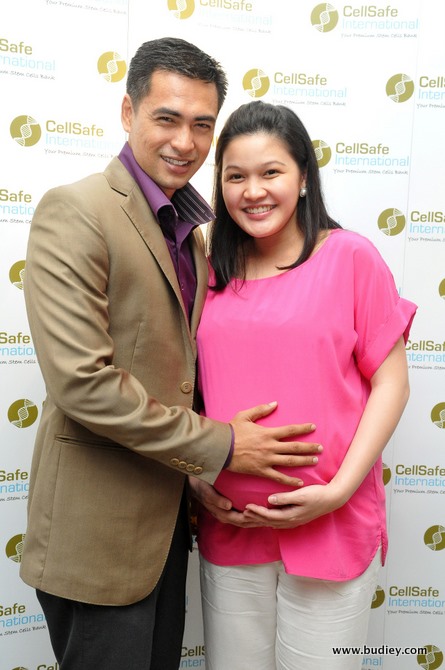
Dr Halina added “As parents, we think stem cell banking is a very good gift for our newborn. Hence, we want to champion the cause to promote its awareness. My husband when he came back from space was exposed to a host of technological advancements, yet he still tells me that he is humbled by the fact that there live saving discoveries at our doorstep yet awareness is still minimal.”
Datuk Dr Sheikh further elaborated that the flipside would require scouring the public stem cell banks in the region, likely the ones in Singapore or Taiwan. However this acquisition is costly and compatibility issues often arise due to DNA-profiling that might not always match.
In conjunction with the event, a new parenting website aptly named Parenthood.My was also launched. The website is a social networking forum that provides a discussion platform for young parents to form a community support group. In addition, there are plans for a panel of experts who will share their insights from time to time on the website. The website is sponsored by Cellsafe as part of its ongoing efforts to ease the transition for young adults into parenthood.
For more information, please log on cellsafegroup.com and Parenthood.my.
About CellSafe International Group
CellSafe International Group (“CellSafe”) is a regional biotechnology group that focuses on non-controversial stem cells technologies (i.e. from non-embryonic sources). CellSafe specializes mainly in the harvesting and cryogenic preservation of cord blood stem cells.
In Malaysia, CellSafe is a biotech service provider fully licensed by The Ministry of Health of the Government of Malaysia (MOH) to operate a stem cell bank and to provide cord blood stem cell cryogenic preservation services. CellSafe has also been awarded the Bionexus Status by the Malaysian Biotechnology Corporation, the governmental agency in charge of developing the biotech industry of Malaysia . The Bionexus status allows CellSafe to enjoy a 10-year tax-free pioneer status and access to the R&D grants specifically set-up for the biotechnology sector.
CellSafe currently operates from Malaysia and Indonesia. They are planning to expand into other ASEAN countries in the near future.
CellSafe is staffed with well-qualified medical technologists and receive advice from experienced medical doctors and scientists. CellSafe is one of the fastest growing network of cord blood in Southeast Asia.
(Source taken from : (http://www.budiey.com/journey-to-parenthood-my-by-sheikh-muszaphar-dr-halina/)
 Firsttime parents: The couple at the launch of the portal last week.
Firsttime parents: The couple at the launch of the portal last week.

